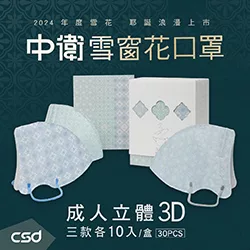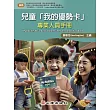For courses in basic electronics and electronic devices and circuits
A user-friendly, hands-on introduction to electronic devices filled with practical applications and software simulation
Electronic Devices (Conventional Current Version), 10/e, provides a solid foundation in basic analog electronics and a thorough introduction to analog integrated circuits and programmable devices. The text identifies the circuits and components within a system, helping students see how the circuit relates to the overall system function. Full-color photos and illustrations and easy-to-follow worked examples support the text’s strong emphasis on real-world application and troubleshooting. Updated throughout, the Tenth Edition features selected circuits keyed to Multisim V14 and LT Spice files so that students learn how to simulate, analyze, and troubleshoot using the latest circuit simulation software. Additionally, an entirely new Chapter 18, “Communication Devices and Methods,” introduces communication devices and systems.
本書特色
新版特色:
•Offers two types of software for circuit simulation, and analysis. Expanded, updated Multisim® Version 14 and all-new LT Spice circuit files for selected examples and troubleshooting problems allow students to measure circuit quantities and troubleshoot faulty circuits in a simulated environment–offering an excellent transition to lab experiments. Files are available on the companion website www.pearsonhighered.com/careersresources/.
•Offers an introduction to basic electronic communication devices and methods. An entirely new Chapter 18, “Communication Devices and Methods,” introduces communication devices and systems.
•UPDATED: Diversified problem sets–including basic, advanced, troubleshooting, datasheet, and Multisim troubleshooting problems–offer a chance to practice applying theorems and formulas, encouraging students to think through a solution in a logical manner. Many new problems are included in the Tenth Edition.
•UPDATED: Offers expanded coverage of key topics, such as:
•FETs, including JFET limiting parameters, FINFET, UMOSFET, Current source biasing, Cascode dual-gate MOSFET, and tunneling MOSFET
•Thyristors, including SSRs using SCRs, and motor speed control
•Switching circuits, including interfacing with logic circuits
•PLL
圖書特色:
•Provides a solid foundation in basic principles and then moves into practical applications of those principles. The book provides up-to-date, complete coverage of basic circuits and concepts–and then coverage of analog integrated circuits.
•Allows students to see how theory can be applied to a real-world situation.
•The Device Application at the end of most chapters shows how a specific device or circuit is used and takes students through the steps of design specification, simulation, prototyping, circuit board implementation, and testing.
•To give students even more practice, the Device Applications coordinate with an available laboratory manual by Dave Buchla.
•A Programmable Analog Design feature(Chapters 12—16) offers students an introduction to analyzing and designing analog circuits by programming FPAAs (field programmable analog arrays) or dpASPs (dynamically programmable analog signal processors).
•Teaches students practical troubleshooting techniques. Throughout the text, troubleshooting sections present methods and procedures for identifying, isolating, and correcting faulty devices and circuits.
•Shows students how to use and apply the concepts and then solve a similar problem on their own. Numerous worked-out examples illustrate and clarify concepts or procedures. A corresponding Related Problem allows students to solve a similar problem on their own.
•Provides students with relevant illustrations of equipment and schematics they will encounter in the field. Hundreds of full-color photographs, illustrations, and schematics visually reinforce important chapter topics.
•NEW: Offers two types of software for circuit simulation, and analysis. Expanded, updated Multisim® Version 14 and all-new LT Spice circuit files for selected examples and troubleshooting problems allow students to measure circuit quantities and troubleshoot faulty circuits in a simulated environment–offering an excellent transition to lab experiments. Files are available on the companion website www.pearsonhighered.com/careersresources/.
•NEW: Offers an introduction to basic electronic communication devices and methods. An entirely new Chapter 18,“Communication Devices and Methods,” introduces communication devices and systems.
•Reinforces learning with a user-friendly format and an abundance of exercises, problems, and quizzes.
•Chapter openers include a chapter outline, objectives, introduction, key terms list, a Device Application preview, and a website reference.
•Sections begin with a section introduction and objectives and ends with section checkup questions to aid students in their study.
•UPDATED: Diversified problem sets–including basic, advanced, troubleshooting, datasheet, and Multisim troubleshooting problems–offer a chance to practice applying theorems and formulas, encouraging students to think through a solution in a logical manner. Many new problems are included in the Tenth Edition.
•A circuit-action quiz checks students’ understanding of how changes in certain parameters affect the behavior of a circuit.
•End-of-chapter sectionalized chapter summaries, key term glossaries, formula lists, true-false quizzes, and self-tests allow students to review key concepts and test their knowledge.
•UPDATED: Offers expanded coverage of key topics, such as:
•FETs, including JFET limiting parameters, FINFET, MOSFET, Current source biasing, Cascode dual-gate MOSFET, and tunneling MOSFET
•Thyristors, including SSRs using SCRs, and motor speed control
•Switching circuits, including interfacing with logic circuits
•PLL



 天天爆殺
天天爆殺  今日66折
今日66折 

























 博客來
博客來 博客來
博客來 博客來
博客來 博客來
博客來 博客來
博客來